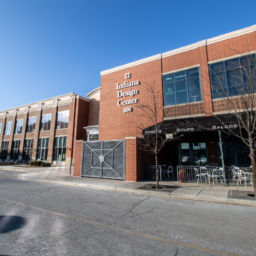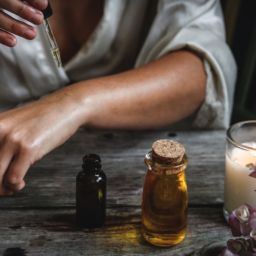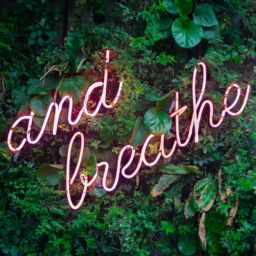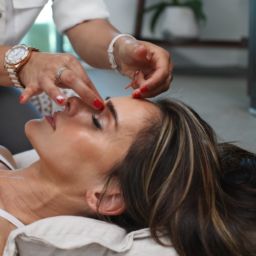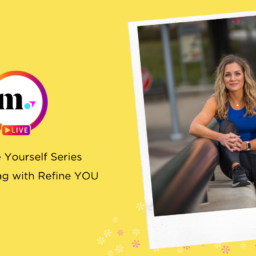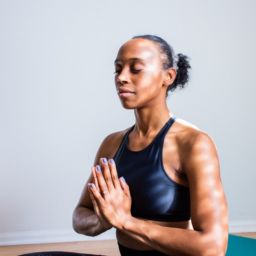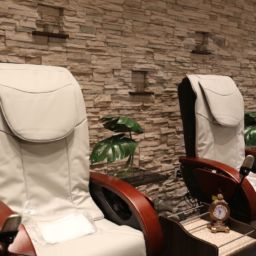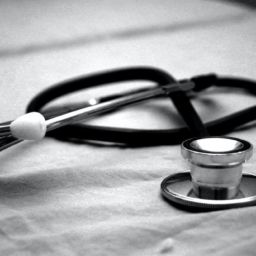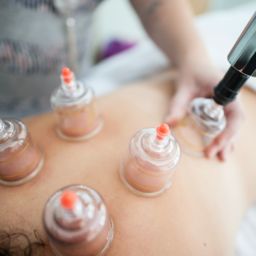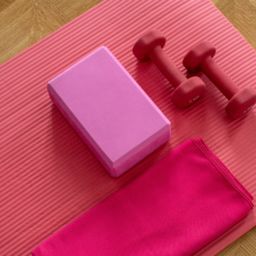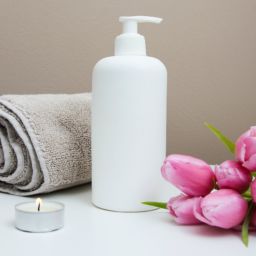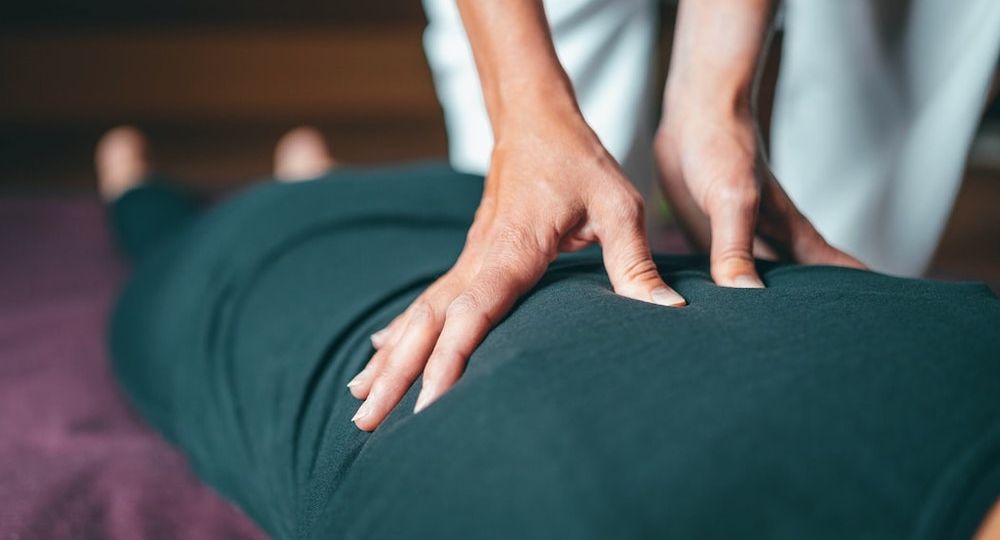
This story was created in partnership with Indy Massage Company.
As hard as it is to believe, it’s been nearly a year since working from home became the new normal. In that time, countless homes morphed from a safe haven where most people were used to relaxing into a workplace where they (probably) stress out.
While employees transitioned to working remotely in March 2020, the change in scenery simultaneously wreaked havoc on people’s bodies. For some remote workers, they move less during the day as a result of their morning commutes being nearly eliminated. For others, their workspace simply doesn’t fit their bodies’ needs. As a result, more people are reporting struggles with poor posture, tension near the shoulder blades, and even digestion issues.
Fear not, though. We sought help from Melissa SanFilippo, a massage therapist with Indy Massage Company, on how to ease the physical toll the pandemic and WFH has caused.
Tension in the neck and back
If you’ve noticed pesky knots and tension in your neck and back, you’re not alone. Since the global workforce adopted a work-from-home environment in March 2020, Indy Massage Company has noted that more of its clients are being treated for tension in the neck and back than ever before.
A big reason for this is because of an inadequate workspace setup. When employees transitioned to remote work, they began working in surroundings where they didn’t have the proper desk setting to do their computer work that they’d traditionally do in the office setting.
SanFilippo describes how those same people are likely not getting up and moving as much as they would in the office. When they had a morning commute that wasn’t from their bed to their desk, they would likely have to scramble to their car in the morning, shuffle between conference rooms for meetings, or walk down the hall to refill their coffee mug. Basically, a large percentage of workforce employees have adapted more stationary lifestyles in the past year.
“The muscle tissue is becoming very stagnant, so that is building up into knots and tension,” SanFilippo says.
Her biggest piece of advice to prevent and combat upper body tension is to keep moving. SanFilippo suggests following along to a YouTube video about Tai Chi, yoga, and even dance. Ideally it’s some form of exercise that targets that area you’re experiencing discomfort in. Another suggestion is setting alarms to remind yourself to get up and move throughout the day, any way you can.
“Movement is very important to our bodies,” SanFilippo says. “I encourage them to get up and move. If you can do anything, just stand up and shake. Do some stretches while you’re sitting.”
Poor posture
Another casualty of an inadequate home office setup has been poor posture. For some, they might be hunched over at their kitchen table for eight hours a day or maybe don’t have a fancy ergonomic desk chair at home like the one they had in the office. Either way, Indy Massage Company has noted a rise in clients exhibiting poor posture.
To help her clients, SanFilippo recommends a few massages: Activated Stretch, Deep Tissue, Thai Massage, Myofascial Release, and Melmasan.
“These massages can help release tension in the connective tissues and muscles,” SanFilippo says. “This being said, it is important that a client works in unison with massage in focusing on changing habits of bad posture. For example, while working on their computers, pulling the shoulders down away from the ears and back will help to restructure posture.”
That being said, it might be time to invest in a quality desk chair and setup, in addition to a massage here and there.
Touch Starvation
With social distancing and staying 6-feet apart being standard practice these days, it’s no surprise that the pandemic has caused a number of people to experience a lack of human touch, otherwise known as touch starvation. According to Healthline, touch starvation occurs when “a person experiences little to no touch from other living things.”
“It’s not something that we think about,” SanFillippo says. “It’s a proven fact by science that we as human beings need that physical touch for our well-being psychologically, emotionally, and physically.”
According to Healthline, the body releases cortisol, a stress hormone, when it’s under pressure. Human touch has actually been found to reduce stress and calm certain bodily functions, such as heart rate and blood pressure. Touch has also been found to be a big factor in building healthy relationships because it stimulates serotonin, a natural antidepressant, and dopamine, the pleasure chemical.
Healthline describes the symptoms of touch starvation as feeling “overwhelmingly lonely or deprived of affection.” Other symptoms include low relationship satisfaction, difficulty sleeping, and a tendency to avoid secure attachments.
To accommodate its clients who have experienced touch starvation, while being COVID-19 safe, Indy Massage Company offers Swedish Massages. This massage is a relaxing and gentle massage that uses a continuous hands-on gliding technique. It might not be a hug from your loved one, but it’ll get the job done for now.
Poor cardiovascular health
While working from home has been crucial to stopping the spread of COVID-19, it’s also brought about other health concerns, such as poor cardiovascular health. According to the Mayo Clinic, cardiovascular issues, such as coronary artery disease, are caused by a poor diet and lack of exercise, just to name a new.
Prior to the COVID-19 pandemic, employees usually had a short walk to work or some type of commute that required them to leave their house. Now, in this current pandemic workforce, that commute has nearly dissolved for some, taking away their usual source of daily exercise. And as we’ve concluded, lack of exercise can wreak havoc on the cardiovascular system.
In addition to keeping the body moving, such as taking a walk or stretching along to a YouTube video, SanFilippo recommends a few massages that help boost better cardiovascular health.
“Movement is very important for our bodies,” SanFilippo says. “Massages help with the cardiovascular system in the way that it stimulates the muscle tissue bringing more blood flow to an area.”
She recommends massages like Cupping, Graston, and Gua Sha. These techniques specifically bring fresh blood flow through the muscle tissue, pushing any toxins and stagnant blood out of the area.
“We also offer manual lymphatic drainage which helps with inflammation and moving lymph through the body helping to activate the lymph nodes,” SanFilippo says. “When we think of the body we typically want to focus on one part of the body. But, the body works as one; if you have one system in the body that is having problems it can affect other parts of the body.”
Poor digestion
A health issue brought on by the stress of living through a pandemic and leading less active lifestyles that’s often overlooked is poor digestion. According to the Cleveland Clinic, inactivity, stress, and anxiety can cause indigestion. And as we alluded to earlier, many employees working from home have reported being less active than they were when they worked in an office, not to mention stressed because of a lack of divide between home life and work life.
Lucky for you, massages have even been found to ease digestion issues when combined with a healthy diet.
According to Healthline, foods that are good for proper digestion include yogurt; apples; whole grains; dark green vegetables; salmon; peppermint; kombucha; and bone broth.
“When dealing with the digestive system, I cannot stress enough how important a healthy diet is along with some type of activity,” SanFilippo says. “In my manual lymphatic drainage session, digestion often comes up and when it does, I use a massage technique that helps movement through the colon. Once again, I cannot stress enough how important it is that we are moving and stimulating our bodies to increase the lymphatic system and the cardiovascular system.”







